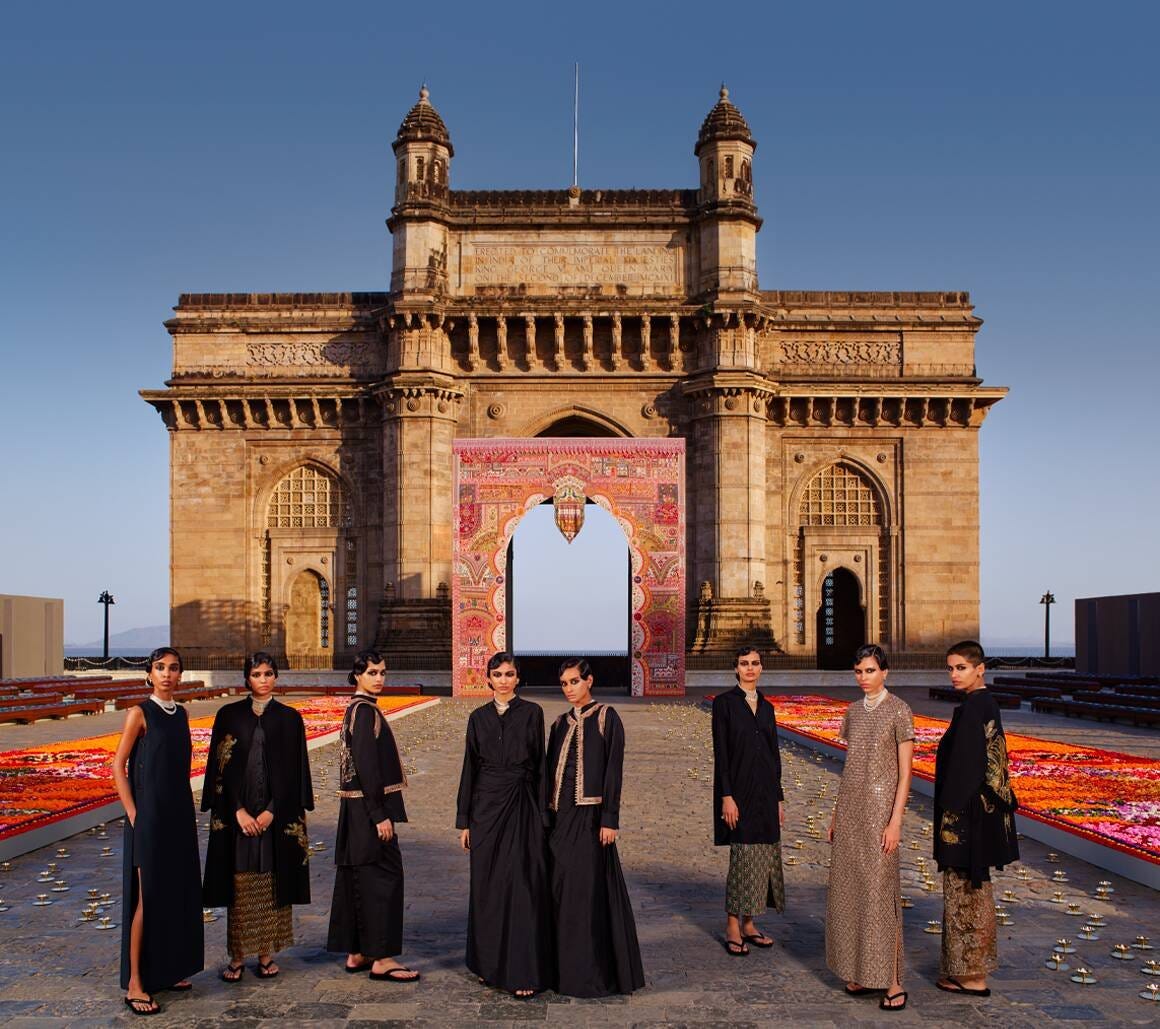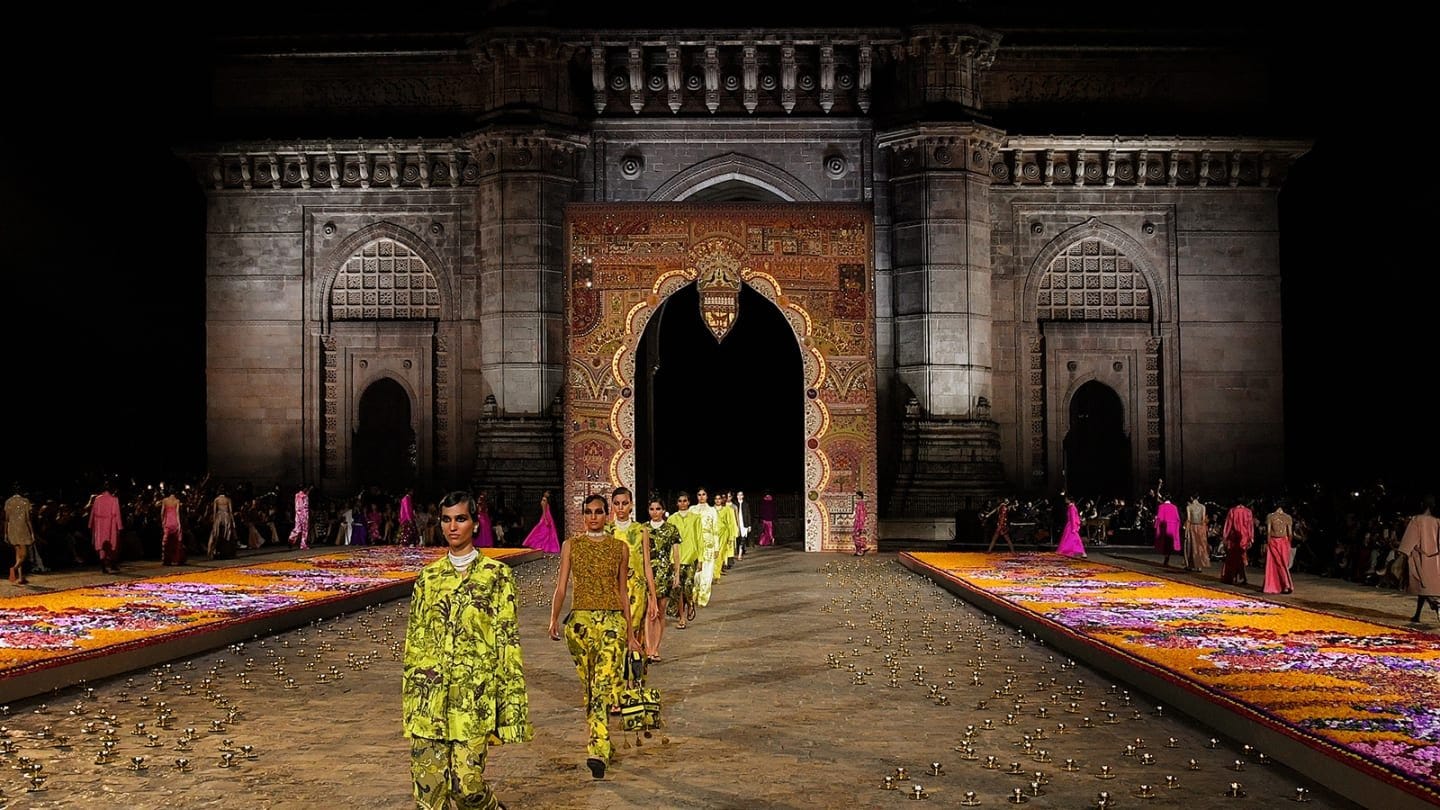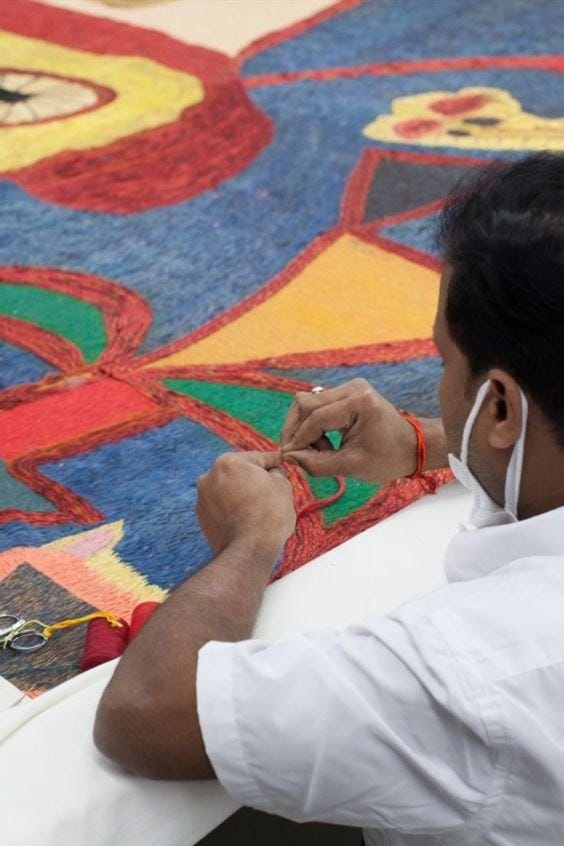Dior in India: A testament to India’s growing purchasing power for luxury
With the recent Dior show in India, a new era of couture flex is upon us.
With the recent Dior show in India, a new era of couture flex is upon us. We’ve seen elements of this before, Gucci in Seoul (albeit later cancelled due to a local tragedy), Chanel in Dakar, Senegal; Dior Men in Giza, Egypt: European luxury fashion houses are indeed scoping exotic locations for their big drops these few seasons.
In Mumbai, India, Dior recently showcased a retrospective consisting of 50 looks at the Gateway of India in Mumbai, against a backdrop of 12ft long toran, diyas lining the runway and Indian classical elevating the mood. As magnificent as the country and location in celebration, the runway was adorned with marigolds, diya lamps, and the collection showcasing the myriad textiles from Madras checks, brocades, tie-n-dye work, Nehru collars and tailored kurtas.
India has been at the left, right and centre in the world of crafts, with European couturiers leveraging this talent for decades. For decades, Indian artisans have been working behind the scenes developing pieces that find themselves on global couture runways, shown-off as European couture and handed down from one consumer generation to the next, each oblivious of where it was handcrafted.
The Kashida embroidery originated in the Mughal Period, the Phulkari in the 15th century and Indian weaves represent over 5000 years old historic heritage. If we were to trace the evidence of Indian crafts in Europe: the French in the time of Louis XIV’s loved Indian craftsmanship so much that the government was forced to ban their import and sale, leading to ban on calicos and chintz. Kashmiri buta and shawls were so popular in the 18th century that the Scottish town of Paisley became really successful in making cheap replicaes, till date known as “paisley”.
With Dior itself, the collaboration between Chanakya School and the French atelier has been as old as 30 years for development of surface embroideries. A luxury garment piece usually takes more time getting embroidered in India, than getting assembled and finished back in Europe. Much like we cannot speak of India without truly appreciating its diversity and scale, we cannot speak of European luxury fashion without Indian craftsmanship.
If we are seeing some kind of repositioning of Indian crafts on the global stage, the Dior fashion show might be the first step of recognition, some people say. The only way to find out whether this impetus will really stick, is to let time unfold.
The big point to highlight, however, is that India’s force today comes equally from its artisanship as well as its growing purchasing power as the next big luxury destination after US & China.
According to a recent EY report, India’s GDP will reach $26 trillion and and its per capita income will touch $15000 by 2047, placing it amidst one of the most developed economies in the world.
This national growth will see its ripple effect in the luxury industry which is expected to grow by 3.5x by 2030, according to Bain & Company. A motion to grab the Indian consumer base is already set: French luxury retail brand Galleries Lafayette is opening in tie up with ABFRL, bringing over 200 luxury brands to the country, which Reliance Brands ltd, has signed deals to bring Balenciaga and Valentino to India.
“With a fast-growing number of HNWIs, a vast youth population, a stable government at the center, and a largely aspirational demand-based economy, India is on the tipping point of much larger luxury consumption,” says Abhay Gupta, CEO of luxury Connect. “Earlier challenges of a complex duty structure, a lack of real estate worthy of hosting luxury brands, and luxury skilled talent shortages are being rapidly overcome.”
While India has always has a huge socio-economic skew, the purchasing power for luxury was always only with the wealthy elites, like the maharajas. Only recently, the economic rise of the middle class with an increase in disposable income is leading to consumption of luxury en mass.
What we are seeing is not just a celebration of luxury that is produced in India, but an aftermath of India really surpassing the critical mass in luxury consumption. Do we see the Indian crafts increase in their economic value much like the Japanese denim? What really happens from here is anyone’s guess.
The bottomline really is that the time to really “introduce” Indian crafts on a global stage was decades ago. We have been a producer power in exquisite crafts for centuries. What we have yet to see is where the consumer power of India takes the global luxury industry.
References:
https://jingdaily.com/india-next-china-luxury-lv-gucci/
https://retail.economictimes.indiatimes.com/blog/indian-luxury-market-in-2023-and-beyond/97915880#:~:text=As%20per%20Bain%20and%20Company,e%2Dcommerce%20and%20demand%20from
https://www.ingentaconnect.com/contentone/westburn/jcb/2010/00000009/00000001/art00005





